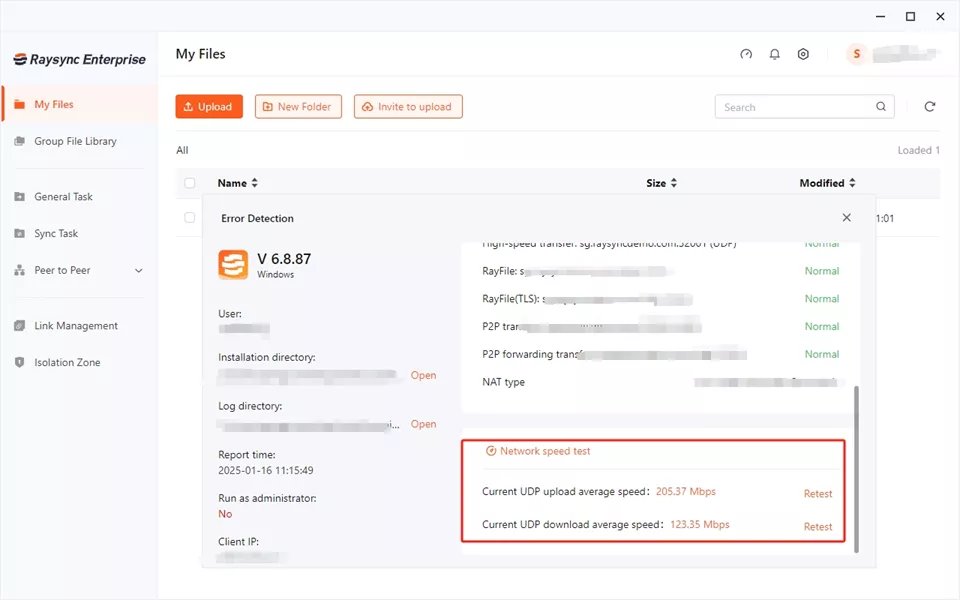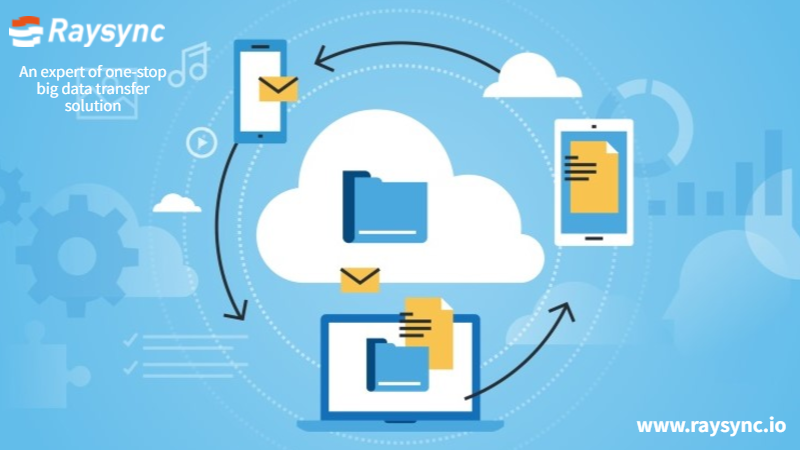Understanding FTP Vulnerabilities: A Security Overview
April 30, 2025
Ever wondered about the hidden risks lurking within the seemingly simple act of transferring files online? File Transfer Protocol (FTP) has been around for ages, but like any technology, it has its soft spots.
Let's take a friendly, straightforward look at ftp vulnerabilities to shed light on these weaknesses and why staying informed is crucial for your digital safety
What Makes FTP Inherently Vulnerable
FTP’s design, originating in the early days of the Internet, lacks modern security features. Key FTP server vulnerabilities include:
- Unencrypted Data Transmission: FTP sends data in plaintext, making it easy for attackers to intercept sensitive information.
- Authentication Weaknesses: FTP is susceptible to brute-force attacks without solid authentication mechanisms.
- Port 21 Exposure: FTP uses port 21 for control commands, which is often targeted by attackers for exploitation.
- Anonymous Access: Many FTP servers allow anonymous logins, providing an entry point for malicious users.
These inherent weaknesses make FTP unsuitable for transferring sensitive or critical data in today’s security-conscious environment.
7 Common FTP Vulnerabilities and Attack Vectors
Understanding specific FTP vulnerabilities helps in mitigating risks:
1. Cleartext Credentials and Data Transmission (Sniffing)
As discussed, FTP transmits usernames, passwords, commands, and file content in plain text. Attackers on the same network or those who can intercept network traffic can easily capture this sensitive information using packet sniffing tools. This allows them to gain unauthorized access to the server and potentially steal or manipulate data.
2. Brute-Force Attacks
Due to the weak authentication mechanism, attackers can attempt to guess usernames and passwords by systematically trying a large number of combinations. While not a vulnerability in the protocol itself, the lack of built-in protection against excessive failed login attempts in standard FTP servers makes them susceptible to these attacks.
3. Anonymous FTP Misconfiguration
If anonymous FTP is enabled with write permissions or access to sensitive areas of the server, attackers can upload malicious files, deface the server, or use it as a staging ground for other attacks. Improperly configured anonymous FTP can provide an open door for malicious activity.
4. Buffer Overflow Attacks
Some older or poorly maintained FTP server software may contain buffer overflow vulnerabilities. Attackers can exploit these by sending specially crafted commands or data that exceed the allocated buffer size, potentially causing the server to crash or allowing the attacker to execute arbitrary code on the server.
5. FTP Bounce Attacks (PORT/PASV Command Abuse)
This is a more complex attack where an attacker uses an FTP server as an intermediary to scan or attack other systems. By manipulating the PORT or PASV commands, the attacker can trick the FTP server into initiating a connection to a third-party target, effectively hiding the attacker's origin and potentially bypassing firewalls.
6. Denial-of-Service (DoS) Attacks
Like many network services, FTP servers can be targeted by DoS attacks. Attackers can flood the server with excessive connection requests or malformed packets, overwhelming its resources and causing it to become unresponsive to legitimate users. The lack of robust rate limiting or resource management in some FTP server implementations can exacerbate this vulnerability.
7. Directory Traversal Attacks
If the FTP server software doesn't properly validate user-supplied file paths, attackers might be able to use ".." sequences in commands to navigate outside of their authorized directories and access sensitive files or directories on the server's file system. This can lead to information disclosure or unauthorized modifications.
These attack vectors highlight the importance of securing FTP servers and considering more secure file transfer methods.
5 Potential Consequences of Exploiting FTP Vulnerabilities
Exploiting FTP server vulnerabilities can lead to severe repercussions:
1. Data Breach and Sensitive Information Exposure
The most direct consequence of many FTP vulnerabilities, especially cleartext transmission, is the theft of sensitive data. Attackers can intercept credentials and file contents, gaining access to confidential documents, financial records, personal information, or proprietary data. This can lead to significant financial losses, reputational damage, and legal liabilities.
2. Unauthorized Access and System Compromise
Successful exploitation of vulnerabilities like buffer overflows or weak authentication allows attackers to gain unauthorized access to the FTP server and potentially the underlying system. This can enable them to execute arbitrary commands, install malware, create backdoors for persistent access, and pivot to other systems on the network, leading to a full system compromise.
3. Data Manipulation and Integrity Loss
Attackers who gain unauthorized access can not only steal data but also modify or delete it. This can lead to data corruption, loss of critical information, and disruption of business operations. Without proper integrity checks in standard FTP, such modifications might go undetected for a significant period.
4. Server Hijacking and Malicious Use
Attackers can hijack vulnerable FTP servers to use them for malicious purposes. This includes using the server as a staging ground for distributing malware, launching attacks against other systems (as seen in FTP bounce attacks), or storing illegal content. This can lead to the compromised server being blacklisted and potentially incurring legal penalties for the owner.
5. Denial of Service and Business Disruption
Exploiting vulnerabilities to launch Denial-of-Service (DoS) attacks can render the FTP server unavailable to legitimate users. This can disrupt file sharing processes, hinder business operations, and lead to productivity losses. Prolonged downtime can have significant financial and operational impacts.
These consequences underscore the need for robust security measures and the adoption of secure file transfer solutions.
How to Secure an FTP Server
To enhance FTP server security:
- Use FTPS or SFTP: Implement secure versions of FTP that support encryption.
- Strong Authentication: Enforce strong, complex passwords and consider multi-factor authentication.
- Regular Updates: Keep the FTP server software updated to patch known vulnerabilities.
- Limit Access: Restrict user permissions and disable anonymous access.
- Firewall Configuration: Configure firewalls to limit access to necessary ports only.
- Monitor Logs: Regularly review server logs for suspicious activities.
- Implement Intrusion Detection Systems (IDS): Detect and respond to potential threats promptly.
While these steps can mitigate pure FTPD vulnerabilities, transitioning to more secure file transfer solutions is advisable for handling sensitive data.
Best FTP Alternative with Top Security - Raysync
Raysync is a modern, high-speed file transfer solution built to fix everything wrong with old-school FTP.

Whether you are sharing large files across the globe or working with sensitive data, Raysync gets the job done—fast, securely, and without the usual headaches.
Unlike traditional FTP tools, Raysync uses enterprise-grade encryption, built-in acceleration, and intelligent bandwidth control to keep your transfers smooth and protected.
It’s perfect for teams who need reliable file sharing without delays or security worries. With support for multiple platforms, easy setup, and real-time monitoring, Raysync is ideal for businesses of all sizes.
You won’t have to worry about FTP vulnerabilities anymore—Raysync has your back.
Pros:
- Scalability: Easily handles large-scale enterprise data transmissions, regardless of size or location.
- Cross-Platform Support: Works smoothly across Windows, Linux, and Mac systems.
- Real-Time Monitoring: Gives you visibility into transfer status, user activity, and performance metrics.
Cons:
- There may be a slight learning curve for teams used to basic FTP tools when switching to a feature-rich tool like Raysync.
Pricing Model of Raysync:
- Small Business: $99/month.
- Enterprise: $1,599/year.
- Custom Plans: Custom plans for large-scale enterprises.
The Bottom Line
With cyber threats all around, sticking with old FTP is risky. Its weaknesses, like those in Pure-FTPd and FileZilla, can leave you vulnerable. While you can try to patch it up, modern solutions like Raysync are built secure from the start. Offering fast, encrypted transfers, it's a smart upgrade if you value both speed and safety for your files. Ditch the FTP headaches and go with something better!
You might also like
![Top 5 FTP SaaS Solutions [Individual / Business]](http://images.ctfassets.net/iz0mtfla8bmk/4y0JMTNs8kAmi8I770y7Da/7bcc0be7cd0e11c4317099297f1aafb5/ftp-saas.png)
Industry news
December 12, 2024Explore the top 5 FTP SaaS solutions tailored for individuals and businesses. Learn about the features and pricing models of FTP SaaS, and how they simplify file transfers.

Industry news
January 31, 2023aysync not only has powerful enterprise file synchronization function, but also has powerful file synchronization function and is easy to use, which makes people bid farewell to the tedious manual copying.

Industry news
September 4, 2024Learn how it differs from FTP, see it in action with FileZilla, and explore top SFTP transfer tools for business.